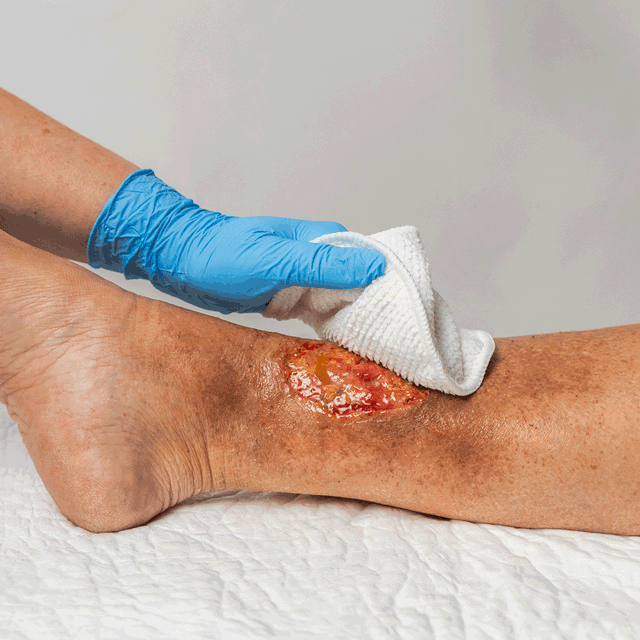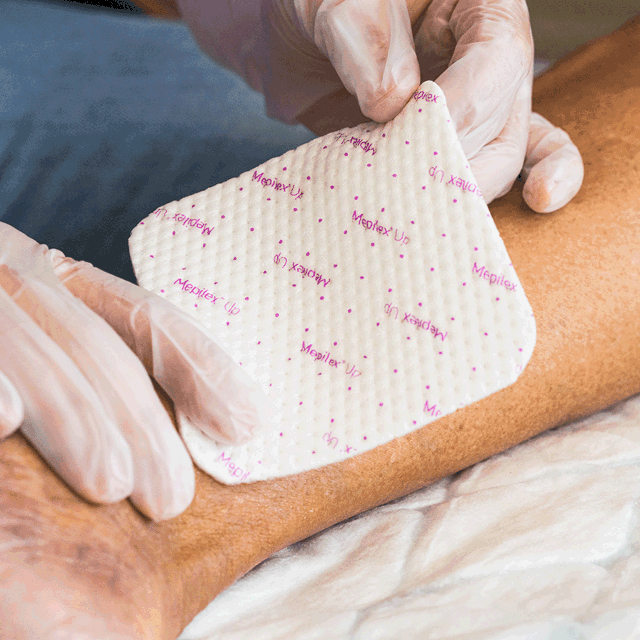Treating diabetic foot ulcers
Managing diabetic foot ulcers
At Mölnlycke we offer a streamlined portfolio of easy-to-use products for effective management of DFUs.

Debride
Debridement is essential in wound bed preparation. Mechanical debridement pads can help you remove slough and debris.

Oxygenate
Oxygen is an important requirement in the complex process of wound healing. Addressing oxygen deficiency through topical oxygen therapy can help improve wound healing outcomes.

Manage infection
Infection is an ever-present risk and serious complication of chronic wounds. It causes patients additional pain and discomfort, can delay wound healing and lead to hospital readmittance.

Dress
Choice of dressing matters, especially in difficult-to-dress areas. The correct dressing should manage exudate, protect the wound and ensure patient comfort to help promote optimal wound healing conditions.
-
Wound Care For All
A selection of effective and easy to use guides to support the management of hard to heal wounds, for nurses, non-medical caregivers and patients.
Learn more about Wound Care For All -
Advance your knowledge
We have designed a comprehensive series of digital learning modules that you can use on demand at a time and place that suits you.
Learn more about wound care
Related articles
-

Wound care | 5 min read Diabetic foot ulcers: Causes, risks, and epidemiology
Examining the causes, risk factors, and epidemiology of diabetic foot ulcers (DFUs), a serious complication of diabetes, and approaches to prevention and management period.
-

Wound care | 4 min read Diabetic foot ulcers: Treatment, management, and care
Examining how diabetic foot ulcers are diagnosed, treated, and managed, taking a holistic approach to the patient’s individual wound and needs.
-
Wound care | 5 min read Topical oxygen therapy with Granulox™
Watch video





